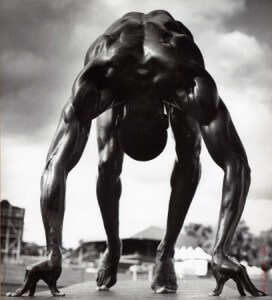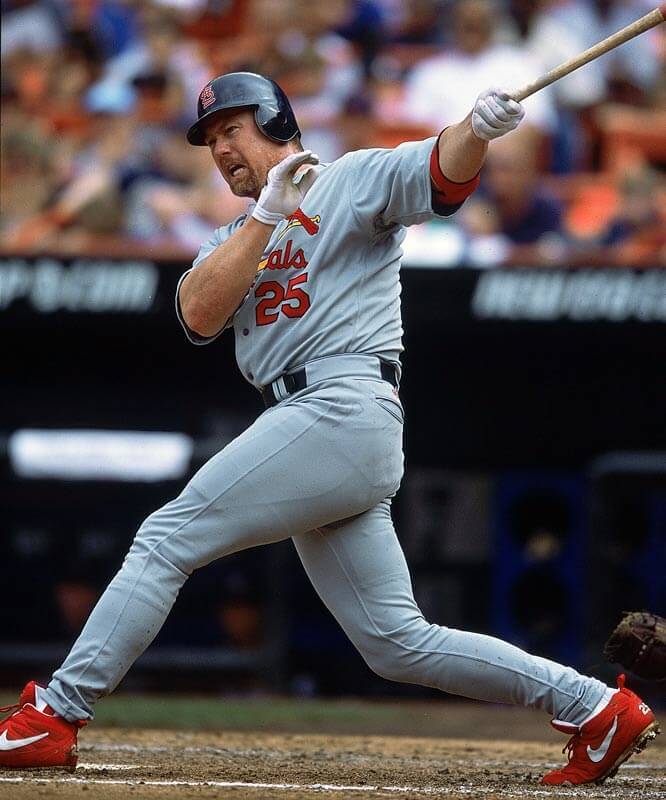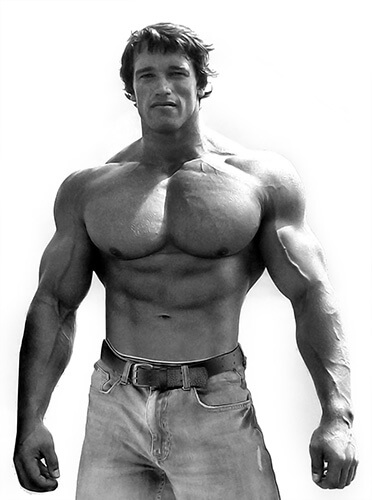This post is also available in:  Français
Français  Italiano
Italiano  Español
Español
The Best Posts
Latest posts
WIKISTERO – WIKIPEDIA OF ANABOLIC STEROIDS
Wikistero is an Internet-based, universal, multilingual encyclopedia that aims to provide objective and verifiable content on anabolic steroids, growth hormones, and peptides. Currently, this steroid wiki is visited by more than 30,000 users per month and contains hundreds of high-quality that are updated regularly and which have been translated in 9 different languages. Its key aim is to provide a coherent set of authentic information on steroids from a neutral point of view. The regular contributions made by our passionate editors who post new articles weekly allows us to be a reliable source of reference information on various anabolic products.FREE COACHING
Do you have a product question? Not sure about your cycle, dosages, or side effects?
WikiStero.com offers you professional advice to maximize your results safely. Our COACH is a former bodybuilding competitor, with years of experience in product advice, nutrition and training. This service is 100% free and confidential, your personal data will never be disclosed.
Mona
Jarn
Derf
Marx
Chris
Ben

Bulking
Looking to gain muscle mass? Wikistero outlines the right steroids to use whether you are an amateur or expert user.

Dry mass gains
You want to gainquality lean muscle using steroids, so here’s what you need to know.

Weight loss
You need to lose weight quickly? Consider yourself to be in the right place too. Lose weight safely here.

PTO – Strength
If your goal is to gain immense muscle strength using steroids, we shows you all the exact resources you need.
History of anabolic steroids
To understand anabolic steroids, it’s important to trace back their history as well as how they have developed over the years.
 History of Anabolic Steroids
History of Anabolic Steroids
To understand anabolic steroids, it’s important to trace back their history as well as how they have developed over the years. It all started with this assumption that testicles were key in both the development of males as well as maintenance of their sexual ability. In 1849, a scientist by the name Berthold conducted experiments on cockerels in an attempt to determine this hypothesis. In his studies, he removed their testicles and realized that the birds lost several characteristics commonly associated with males including sexual function. It is here that it was confirmed that testicles play an essential role in what we consider to be the primary sexual properties of man. Berthold also found that if testicles were removed and grafted to the abdomen, the sexual functions of these cocks were not impacted. He also observed that no nerve connection had been created even after changing the position of these organs; in fact, the cockerel’s hairiness significantly increased following this switch. In the end, this helped to demonstrate that testicles act on the blood after which this blood cause a systemic effect on the whole body. Other experiments conducted thereafter showed similar results as we’ll see below.
Increased testosterone levels
 Later, in the 1920s and 1930s, more studies were conducted on bulls by various scientists including Ruzicka, Butenandt, and Hanisch. Testosterone is of course the first anabolic steroid ever created and remains the basis for all other derivations that are used in today. Testosterone was then used in 1936 in another experiment which demonstrated that castrated dogs increased in weight when given this supplement. There were also unproven reports that the Nazis gave their soldiers anabolic steroids. Over the years, further experiments have been conducted and helped to prove that testosterone is indeed a potent anabolic to humans. Between 1948 and 1954, top pharmaceutical firms, Searle and Ciba, produced over a thousand testosterone derivatives and variations.
Later, in the 1920s and 1930s, more studies were conducted on bulls by various scientists including Ruzicka, Butenandt, and Hanisch. Testosterone is of course the first anabolic steroid ever created and remains the basis for all other derivations that are used in today. Testosterone was then used in 1936 in another experiment which demonstrated that castrated dogs increased in weight when given this supplement. There were also unproven reports that the Nazis gave their soldiers anabolic steroids. Over the years, further experiments have been conducted and helped to prove that testosterone is indeed a potent anabolic to humans. Between 1948 and 1954, top pharmaceutical firms, Searle and Ciba, produced over a thousand testosterone derivatives and variations.
The History of Steroids in Athletics
 In 1954, Dr. John Ziegler attended the World Weightlifting Championships in Vienna (Austria) as the official team doctor for Soviet. The Soviets hugely dominated the competition that year easily breaking several world records and winning gold medals in all categories. Rumor has it that Ziegler would later confess to a bar attendant that testosterone injections were performed on his athletes. Once the Americans knew about it, they immediately began injecting themselves too with an aim to defeat the Soviets. Their team doctor was also involved in production of a substance that was even better and more powerful than pure testosterone. This way, in 1956, Methandrostenolone was established thereafter taking the name Dianabol. In the subsequent years, the little pink Dianabol oral tablets grew very popular among many weightlifters. In 1960, there was a much clearer performance gap between Ziegler’s weightlifters and the rest of the country and a less gap with the Soviets. It is also during this time that another anabolic steroid was developed and used to treat developmental delays in children with Turner syndrome. At that time, more and more Americans doctors began to get interested in steroids. This prompted many of them to conduct studies on the impact of these substances on the performance of athletes. Initially, most found out that steroids didn’t have a major impact on athletes with most only noticing a slight increase in physical stature and muscles. However, these studies were later proved to be unreliable. The first and most obvious problem was that steroid doses used by the athletes in question were usually too low to produce any real effect. The second problem was that these studies were not well conducted as test groups were often poorly assembled. Nutrition and exercise were also controlled or standardized during the case studies. Despite these findings, in 1967, the International Olympic Council banned the use of anabolic steroids citing a precautionary principle (doping). Later in mid-70s, other major sports organizations also followed suit in banning the use of steroids.
In 1954, Dr. John Ziegler attended the World Weightlifting Championships in Vienna (Austria) as the official team doctor for Soviet. The Soviets hugely dominated the competition that year easily breaking several world records and winning gold medals in all categories. Rumor has it that Ziegler would later confess to a bar attendant that testosterone injections were performed on his athletes. Once the Americans knew about it, they immediately began injecting themselves too with an aim to defeat the Soviets. Their team doctor was also involved in production of a substance that was even better and more powerful than pure testosterone. This way, in 1956, Methandrostenolone was established thereafter taking the name Dianabol. In the subsequent years, the little pink Dianabol oral tablets grew very popular among many weightlifters. In 1960, there was a much clearer performance gap between Ziegler’s weightlifters and the rest of the country and a less gap with the Soviets. It is also during this time that another anabolic steroid was developed and used to treat developmental delays in children with Turner syndrome. At that time, more and more Americans doctors began to get interested in steroids. This prompted many of them to conduct studies on the impact of these substances on the performance of athletes. Initially, most found out that steroids didn’t have a major impact on athletes with most only noticing a slight increase in physical stature and muscles. However, these studies were later proved to be unreliable. The first and most obvious problem was that steroid doses used by the athletes in question were usually too low to produce any real effect. The second problem was that these studies were not well conducted as test groups were often poorly assembled. Nutrition and exercise were also controlled or standardized during the case studies. Despite these findings, in 1967, the International Olympic Council banned the use of anabolic steroids citing a precautionary principle (doping). Later in mid-70s, other major sports organizations also followed suit in banning the use of steroids.
Use of Steroids in Olympics
Just prior to the ban on steroids in the Olympics, the German Democratic Republic (GDR) began a program aimed at producing new and advanced anabolic steroids for their athletes in various sports categories. The results of this popular experiment remains to be the single largest information resource on the impact of steroids in athletics. Despite being a small country, they managed to dominate nearly all sports while competing with the likes of United States and the Soviet Union. In 1972, the IOC launched a large-scale drug screening program. In 1982, the International Olympic Council had developed a way to detect excessive levels of testosterone in athletes; the testosterone to epitestosterone test. This test involved evaluating and comparing the levels of both testosterone and anepitestosterone. If the testosterone level was found to be 6 times greater than the level of epitestosterone, it was concluded that the athlete had used some form of synthetic testosterone. Unfortunately, this was not enough as some countries were still able to go around the test. For example, GDR was able to come up with a new form of testosterone that dispersed quickly in the body. This meant athletes were able to have successful IOC tests up to three days after their last injection. Even more, a German company by the name Jenapharm which was already providing steroids to athletes, developed a product (epitestosterone) to administer to athletes to bring the testosterone ratio to normal while still using steroids. Their doping methods were so advanced that they remained undetected for several years until 1989 when information was leaked to the western media. It is this scandal that helped create the bad reputation anabolic steroids still have today. Ironically, it is also in 90s that anabolic steroids began to be used by physicians to improve the longevity of patients with AIDS and cancer.
Steroids in the United States
A similar scenario unfolded in the United States. In 1988, a vote for the Anti-Drug Act put steroids in a totally different prescription category. This came with very severe legal penalties for illegal possession or sale. Possession and distribution of steroids was considered a crime. Thereafter, the US Congress added steroids in “Schedule III” of the Act, placing these anabolic products at the same level as amphetamines, methamphetamines, opium, and morphine. Again, this came with identical penalties in case of purchase or sale. This bill was passed without the support of the American Medical Association, the FDA, the DEA, or the National Institute on Drug Abuse..
Steroids and American Baseball
 For quite a long time, Major League Baseball had no any steroid testing program in place. In fact, it was only until Mark Maguire, an American Baseball player looking to beat the famous Home Run record of Roger Maris, was surprised by a journalist after he found a bottle of androstendione in his locker (note that androstenedione is not even a steroid but a prohormone). This saw steroids dominate the press and media again and have remained present in the news all along. In 2000s, steroids again made news after a mass introduction of prohormones in the sport. It was here that the use of steroids in baseball began to become more important. Soon after the famous record by Roger Maris was beaten, another baseball player, Jason Giambi and others came out to say they often used prohormones. The Congress was forced to convene a hearing after which it determined that steroids were not really a threat. Rather, it ruled out that it was the responsibility of professional sports organizations to supervise and regulate their use. The law was updated and an official definition of the term steroid was given as follow: an “anabolic steroid” means any drug or hormonal substance, chemically and pharmacologically related to testosterone (other than estrogens), progestins, corticosteroids, and dehydroepiandrosterone).
For quite a long time, Major League Baseball had no any steroid testing program in place. In fact, it was only until Mark Maguire, an American Baseball player looking to beat the famous Home Run record of Roger Maris, was surprised by a journalist after he found a bottle of androstendione in his locker (note that androstenedione is not even a steroid but a prohormone). This saw steroids dominate the press and media again and have remained present in the news all along. In 2000s, steroids again made news after a mass introduction of prohormones in the sport. It was here that the use of steroids in baseball began to become more important. Soon after the famous record by Roger Maris was beaten, another baseball player, Jason Giambi and others came out to say they often used prohormones. The Congress was forced to convene a hearing after which it determined that steroids were not really a threat. Rather, it ruled out that it was the responsibility of professional sports organizations to supervise and regulate their use. The law was updated and an official definition of the term steroid was given as follow: an “anabolic steroid” means any drug or hormonal substance, chemically and pharmacologically related to testosterone (other than estrogens), progestins, corticosteroids, and dehydroepiandrosterone).
Use of Steroids Today
Today, the use of steroid is far from declining. A recent internet study recently concluded that the use of anabolic steroids among weightlifters and bodybuilders is on an upward trend. In addition, anabolic steroids continue to play a key role in the medical field especially in the management of various conditions such as andropause or menopause, AIDS, breast cancer, and osteoporosis among many others.


 History of Anabolic Steroids
History of Anabolic Steroids